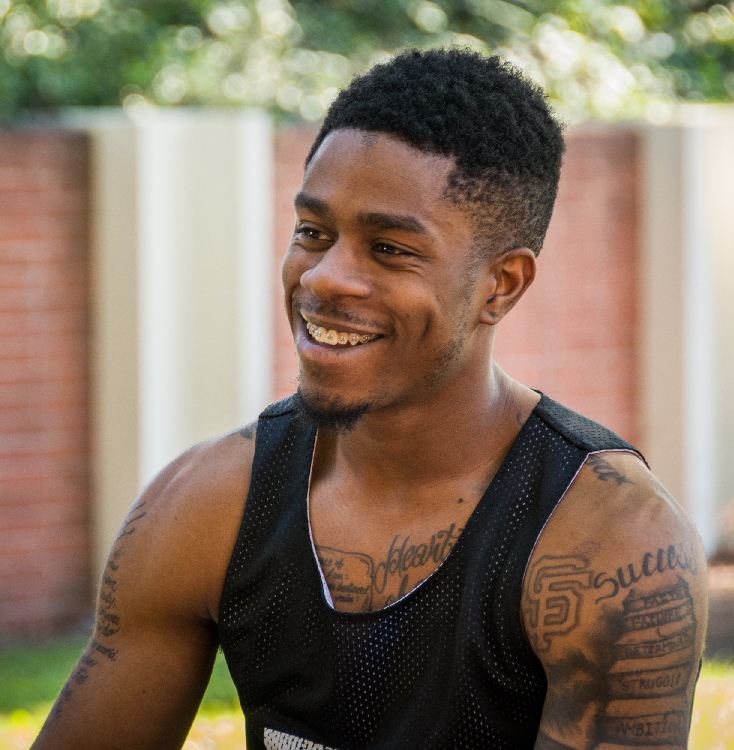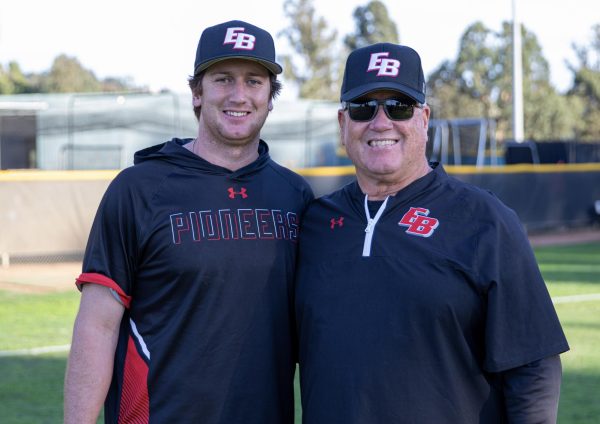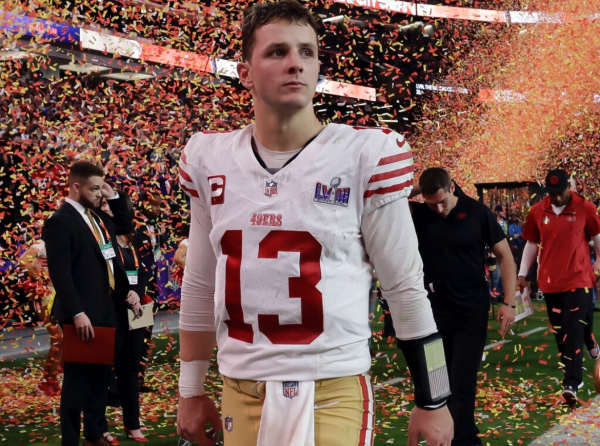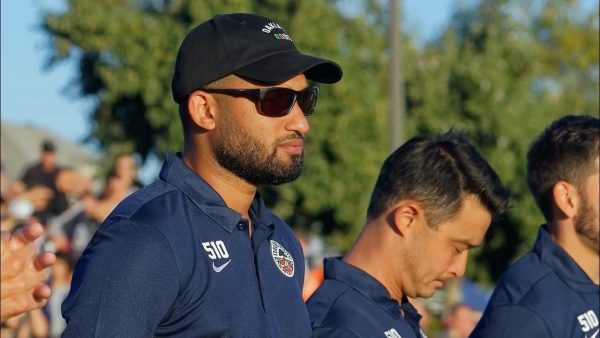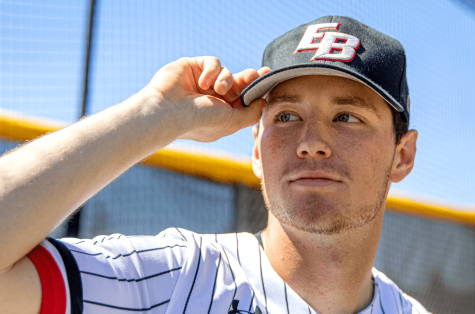CSUEB recruiting unconventional
PHOTO BY TAM DUONG JR./THE PIONEER
CSUEB senior guard Jacari Whiffield discusses his career in September on the Hayward campus.
When most people hear the term “recruiting” they have their own idea of what that means.
Generally people think it means a talented high school or junior college athlete that is being courted by a slew of NCAA Division I blueblood schools. Schools offer full scholarships to these athletes in hopes that they will choose to attend their school and bolster the sports program. However, for California State University, East Bay and similar schools that aren’t Division I, recruiting has a completely different meaning.
For a Division II school like CSUEB, the appeal to top-level high school and junior college athletes is not as strong as it is for Division I schools.
Institutions that are in the NCAA Division I are able to offer prospective athletes full scholarships that cover tuition, books, and housing for most of or usually their entire athletic-collegiate career, something that CSUEB does not do.
“We operate on a partial scholarship model,” Beth Murdock said, the CSUEB Assistant Athletics Director in charge of Compliance and Student Services. “Each head coach has a scholarship budget that they manage. Just over half of our student-athletes receive some athletically related aid.”
Scholarships are part of the athletics department budget that is included in the complete school budget that is approved by the Board of Trustees every year, according to the CSUEB Budget Services website.
In 2012, the Elias Sports Bureau conducted a survey of over 3,000 former Division I college athletes, and over 90 percent of the athletes said that, “receiving a full scholarship was the primary factor in their final college choice.”
Not being able to offer full scholarships to athletes is a major factor in why CSUEB and similar schools have trouble landing top-level talent. Women’s volleyball Head Coach Jim Spagle has been at the helm of the Pioneers’ squad for 19 seasons now and is very familiar with the ups and downs of recruiting at Division II Cal State East Bay.
“I would say at least half of every volleyball roster in the CCAA [conference] is comprised of athletes who have had NCAA Division I offers,” Spagle said. “If we are not recruiting athletes who are also being recruited by Division I schools, we are not recruiting athletes who will be successful at our level of play.”
Many of the CSUEB coaches acknowledged that despite their Division II status, they still target top-level talent when recruiting. CSUEB second-year men’s basketball Head Coach Gus Argenal is familiar with recruiting athletes to Division II and III schools after coming here from Chico State.
“We go after a lot of players that are getting recruited by Division I schools because those are the level of players that we need to be successful in the CCAA,” Argenal said. “You never want to waste time by recruiting someone that has their sights set on something different. After a while, recruits realize what level they are because those are the schools that have continued to recruit them throughout the entire process which can last years in some cases.”
Senior point guard from the CSUEB men’s basketball team Jacari Whitfield knew of Argenal and his recruiting style. Argenal was a coach at Chico State during Whitfield’s stellar career at Saint Joseph Notre Dame High School in Alameda. However, Whitfield eventually chose CSUEB over Chico State and several other schools that were recruiting the standout guard.
“My recruiting experience was definitely different than most,” Whitfield said. “I wanted to stay close to home and family so that had a lot to do with my choice. But coach [Argenal] was really cool and he definitely got my attention with his vision and specific plans for me.”
According to Murdock, prospective student-athletes are allowed as many unofficial visits to a school as they would like but are limited to just one official visit to any school.
Visits can’t take place before the summer prior to their junior year in high school. The school pays for official visits, but the players are responsible for their own expenses on unofficial visits. These visits are often organized by the school, have a structured itinerary for the prospective student-athlete, and often have a group of prospective student-athletes on one official visit.
Coaches are also allowed to contact players through phone, email, and text as much as they want beginning in the summer before their junior year of high school. Social media contact is also acceptable according to the NCAA compliance guidelines.
“The biggest change in recruiting over the past five to six years is the Internet,” Spagle said.
Social media websites and applications like Facebook, Twitter, MySpace, and Instagram have also become major factors in recruiting since their inception in the mid to late 2000s.
Many prospective athletes have credited the social media sites with the primary reason that they signed a letter of intent to attend a school on a full athletic scholarship according to ESPN.
In 2014 University of Kentucky men’s basketball Head Coach John Calipari credited social media for a small part of his consistent recruiting success. Kentucky has had the number one ranked recruiting class the last two years in a row, according to ESPN.
“Some kids get overwhelmed with the sheer number of contacts they receive, but one thing is clear. No matter how overwhelmed a kid is, they still check their social media so I like to maintain a presence there as well,” Calipari said in an interview with ESPN last month.
CSUEB junior pitcher on the women’s softball team Emily Perlich said social media did not play a part in her recruiting process. “[Coach Barbara Pierce] never used social media to contact me. Personally, not many coaches do from my experience. Social media is unprofessional in my opinion,” Perlich said.


